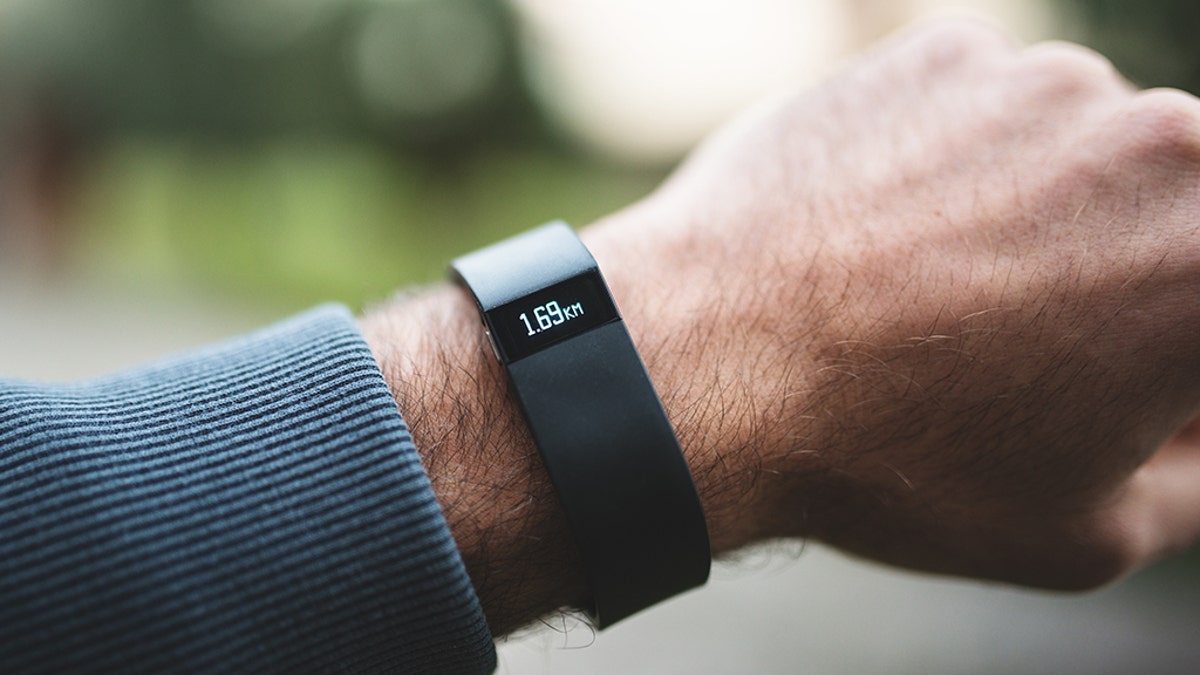Why privacy advocates fear wearable fitness trackers in the workplace
Kurt 'The CyberGuy' Knutsson on concerns over constant health surveillance in the workplace.
Many people use fitness trackers, such as smartwatches, as part of achieving a healthy lifestyle — but some cardiac patients should be aware of the risks.
Some smart scales, smart rings and wearable fitness devices that use "bioimpedance," a sensing technology that emits a tiny unnoticeable electrical current into the body, may interfere with cardiac implantable electronic devices (CIEDs), like pacemakers and defibrillators, according to a new study.
The research was published on Feb. 21 in Heart Rhythm.
10 DIETARY TIPS TO REDUCE HEART DISEASE AND STROKE RISK, ACCORDING TO THE AMERICAN HEART ASSOCIATION
"We found bioimpedance sensing technology available in certain consumer devices such as smart scales, smartwatches, and smart rings could interfere with the correct functioning of CIEDs," lead author Dr. Benjamin Sanchez Terrones of Utah told Fox News Digital.
He’s an assistant professor in the department of electrical and computer engineering and member of the Huntsman Cancer Institute, University of Utah in Salt Lake City.

Any heart patients who have questions about whether their fitness tech devices interfere with their cardiac implantable electronic devices should speak to their doctors, said the lead author of a new study. (iStock)
CIEDs include pacemakers and implantable cardioverter defibrillators (ICDs), according to the American Heart Association.
The study noted the U.S. Food and Drug Administration (FDA) has not cleared any consumer bioimpedance device for patients with cardiac implantable electronic devices because of the potential electrical interference.
Yet not all the commercially available trackers have bioimpedance sensing technology, he added.
"The FDA published a study in 2021 in the same journal as we did where they found that both the Apple iPhones and the Apple smartwatches create a magnetic interference to CIEDs when closer than 6 inches," Sanchez Terrones noted.
"As indicated by the manufacturers of these devices and the recommendation by the American Heart Association for other devices that may also interfere, the safest [step] is not to use them by this population [who have CIEDs]."

Wearable fitness trackers use sensing technology to record the level of stress or vital signs, such as heart rate or the number of steps taken every day. (iStock)
He added that for any questions about these devices, patients should always talk to their health care providers.
Bioimpedance sensing: What is it?
"Bioimpedance sensing is a technology [in which] a tiny, painless, alternating electrical current is applied to the body by the smartwatch, smart ring, or smart scale, and used by the device to measure the body's response," Sanchez Terrones said.
An application of this technology is measuring body composition, "where this electrical current is used to measure hydration level and fat mass content," he said.
Wearable fitness trackers use this sensing technology to record the level of stress or vital signs, such as heart rate or the number of steps taken every day, per the study’s press release.
Smart scales and rings
Some smart scales and rings also use bioimpedance sensing, Sanchez Terrones said.
"When the person is barefoot on the scale, then the scale — in addition to measuring weight — uses bioimpedance sensing to apply an electrical current from one foot to the other in some cases, sometimes from the foot to the hand if the smart scale also has a handle bar with sensors in it, to then measure segmental body composition," Sanchez Terrones added.
The electromagnetic waves on metal detectors and certain devices, such as cell phones, headphones and radios, can keep a cardiac defibrillator or pacemaker from functioning properly.
The scale can measure fat mass in the legs, arms and trunk separately for more accuracy, he added.
Electromagnetic risk well known
The electromagnetic waves on metal detectors and certain devices, such as cell phones, headphones and radios, can keep a cardiac defibrillator or pacemaker from functioning properly, the American Heart Association warns.

"A possible risk with smartwatches had not been fully appreciated," said a cardiovascular medicine expert. (iStock )
"This sort of interference had been previously described with smartphones, but a possible risk with smartwatches had not been fully appreciated," Dr. Deepak L. Bhatt, director of Mount Sinai Heart and a professor of cardiovascular medicine at Icahn School of Medicine at Mount Sinai in New York City, told Fox News Digital.
The association advises patients with an implantable defibrillator or pacemaker to use their cell phone at least six inches from their implantable device (by keeping it at the ear opposite where their device was implanted).
A STRESSFUL MARRIAGE MAY HARM YOUR HEART HEALTH, STUDY FINDS
It also reminds them not to keep their cell phone in their front chest pocket.
What exactly are CIEDs?
Normally the heart beats on its own through its natural pacemaker known as the sinus node.
"Your heart's electrical system controls your heartbeat, beginning in a group of cells at the top of the heart (sinus node) and spreading to the bottom, causing it to contract and pump blood," according to the Mayo Clinic’s website.
When this natural pacemaker stops working properly, the heart can beat too fast or too slowly — so a small, artificial and battery-operated pacemaker can be placed to allow the heart to beat in a regular rhythm.
"Aging, heart muscle damage from a heart attack, some medications and certain genetic conditions can cause an irregular heart rhythm," the website added.
When this natural pacemaker stops working properly, the heart can beat too fast or too slowly — so a small, artificial and battery-operated pacemaker can be placed to allow the heart to beat in a regular rhythm, per the American Heart Association.
GETTING SEPSIS IN THE HOSPITAL IS A RED FLAG FOR FUTURE HEART ATTACKS, STUDY FINDS
An ICD, or implantable defibrillator, is a small battery-powered device that’s placed to prevent sudden death. It would shock the patient if he or she experiences life-threatening cardiac rhythms known as ventricular tachycardia and ventricular fibrillation, according to Mayo Clinic’s website.
When these rhythms occur, the heart can beat so fast that it stops pumping blood out to the rest of the body.
FDA sets standard of electromagnetic compatibility
The researchers evaluated the electrical safety of measuring bioimpedance sensing technology using technical specifications that are established by the FDA.
The researchers first evaluated implantable cardiac devices from three different manufacturers — Medtronic, Boston Scientific and Abbott — in benchtop testing, which is done to have a perfectly controlled testing environment.
"The advantage of this approach is that it facilitates the testing of different manufacturers of CIEDs in a reproducible and repeatable fashion," said the lead author. "However, it does not account for the fact people are not made of cables."

Because it is not possible to study the bioimpedance interference inside actual human beings, the new study included computer modeling. (iStock)
Because it is not possible to study the bioimpedance interference inside actual human beings, the study included computer modeling.
"We simulated with modeling the level of bioimpedance interference using a smartwatch, smart scale, and smart ring form factor on a male and a female human computer model with a CIED," Sanchez Terrones said.
"Bioimpedance sensing generated an electrical interference that exceeded Food and Drug Administration-accepted guidelines and interfered with proper CIED functioning," added Sanchez Terrones in the press release.
Researchers noted that the level of electrical current sometimes "confused" the implantable devices.
Researchers noted that the level of electrical current sometimes "confused" the implantable devices, although the level and the "confusion effect" differed among the three different manufacturers.
CLICK HERE TO SIGN UP FOR OUR HEALTH NEWSLETTER
"This is a clever study that suggests there may be a potential for wearable devices, such as smartwatches, to interfere with medical devices, such as pacemakers and implantable defibrillators," said Bhatt, who was not part of the study.
Study's limitations
Although the study’s computer models are more accurate in terms of human anatomy than plain cables, it did not account for all the biological variability between people, Sanchez Terrones admitted.
He recommends further clinical studies on patients to make sure the scientific and medical community get the most complete information possible to make an informed decision.
CLICK HERE TO GET THE FOX NEWS APP
"It will be important to see how regulators and manufacturers respond to these results to provide concrete guidance to patients," Bhatt added.





















